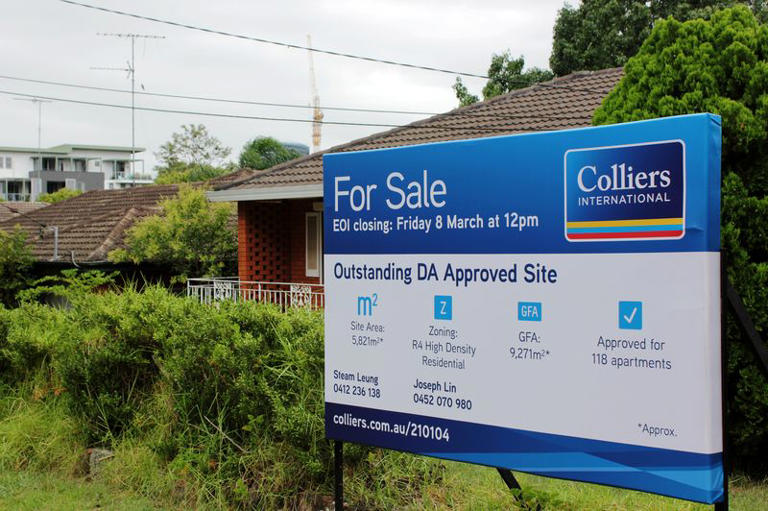Property analysts are forecasting a 5.0% rise in Australian home prices in 2024, according to a Reuters poll. This prediction persists despite central bank comments hinting at a potential interest rate hike before year-end. Following a 25% surge during the pandemic, average house prices fell 9% from their peak but recovered almost all of that decline last year. This rebound occurred even with the Reserve Bank of Australia raising the cash rate to a 12-year high of 4.35%.
The central bank is widely expected to maintain the cash rate at this level well into the second half of the year. While the average price of a home remains prohibitively high for many first-time buyers, factors such as a low jobless rate, high wage growth, and increased immigration are likely to continue driving prices up, albeit at a slower pace than in recent years. Since the 2008 financial crisis, home prices in Australia have nearly doubled, indicating a significant long-term trend in the housing market.
The median forecast of a February 16-28 Reuters survey of 14 property analysts suggests that average home prices will increase by 5.0% this year, consistent with the forecast from a December poll. Projections for 2025 show a similar growth rate of 5.0%, compared to 3.9% in the previous poll. ANZ senior economist Adelaide Timbrell noted that while there was strong price growth of 9.1% in capital cities in 2023, it is unlikely to be repeated in 2024. Factors such as the interest rate staying at 4.35% for most of the year are expected to limit housing price growth in 2024.
“Housing prices will continue to rise because individuals will have increased borrowing capacity throughout the year due to tax cuts and potential rate cuts. Additionally, strong population growth and a backlog of housing construction contribute to this trend.”
An amendment effective July 1 will result in higher taxes for high-income earners, while low-income households grappling with a rising cost of living will experience tax relief.
The combination of rock-bottom interest rates during the pandemic and a shortage of housing supply has exacerbated already high housing prices, pushing many first-time buyers into the rental market.
Regarding affordability for first-time homebuyers in the coming year, six out of ten analysts believe it will worsen, while the remaining four anticipate an improvement.
“Housing has increasingly become a luxury item, with household affordability reaching record low levels. This trend is likely to decrease homeownership rates,” remarked Barrenjoey senior economist Johnathan McMenamin.
“Prior to the pandemic, you needed to earn more than the median income to afford a home. Now, the threshold has shifted even higher up the income distribution. This has narrowed the pool of potential homebuyers, leading to an increase in the rental market.”
Five out of eight respondents anticipate a decrease in the proportion of homeownership compared to renters over the next year, while three expect an increase.
Analysts who foresee a widening gap between demand and supply of affordable homes over the next 2-3 years outnumber those predicting stability or a modest narrowing by two to one.
“Whenever housing prices outpace wage growth, the affordability of homes decreases. This trend will persist unless there is a significant expansion in social housing,” commented ANZ’s Timbrell.
